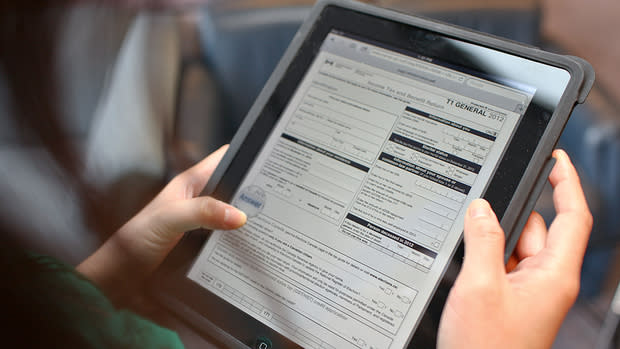Taxes: Be sure to leave a paper trail for the CRA

Electronic filing has taken a lot hassle out of income tax season but it hasn’t eliminated the need for old-fashioned paper to support your claims.
Many taxpayers have been lulled into the belief that what they submit online is fine with the Canada Revenue Agency.
The fact is, the CRA could come calling for those supporting documents any time, and failure to produce them could result in a hefty penalty.
Trying to get all those statements and receipts together before the April 30th tax filing deadline can get complicated. Here’s a checklist of some of the things you need:
T4: The mother of all statements
Employers are required by the CRA to send T4 slips to their employees by Feb. 28 either by snail mail, email or personally. That means you should have received yours by now. If you haven’t, contact your employer.
The key number on your T4 is your gross annual income for the previous year. Gross means before deductions. It’s the first number entered on your tax return and from there it’s your challenge to whittle it down as much as possible before the CRA takes its cut.
The T4 also includes deductions made by your employer throughout the year such as employment insurance premiums, Canada or Quebec Pension Plan and company pension plan payments. Those deductions help lower your overall tax bill.
Another box on the T4 includes the amount of income tax already deducted by your employer, on your behalf. Employers normally collect an amount based on the assumption that all your credits and deductions are on your T4 slip.
Proof of RRSP contributions
Employers generally don’t factor in Registered Retirement Savings Plan (RRSP) contributions made outside of work. Those contributions lower your annual income, so if you made a contribution there’s a good chance your employer deducted too much and you will get money back after you file.
If you made an RRSP contribution for the 2013 tax year, your plan administrator should have provided you with an official slip as proof in the event of a CRA audit. If you made the contribution right before the March 3 deadline it may not have been processed yet and you may have to wait a few days or contact your plan administrator.
Other credits and deductions
The CRA is reportedly cracking down on home businesses that consistently show losses. Whether your home business shows a loss or not, it’s good to be vigilant by organizing receipts and invoices from 2013. That includes utility bills if you are writing off a portion of your home.
If you’re claiming some of the many tax credits available to Canadians it’s important to keep those receipts on file as well. Specific credits depend on the individual and vary from province to province. The most popular credits apply to children in the form of a basic credit and fitness and art credits. In the case of fitness and art credits they only apply to activities approved by the CRA and listed on its website.
Several credits also apply to education-related expenses like books, tuition and interest paid on student loans. A public transit credit is available to students and non-students alike who purchase monthly passes.
Medical expenses for individuals or their dependents not covered by government or private health insurance are fully eligible for the medical expense tax credit.
Tax software programs or the CRA website can help identify the ones that apply to you. If you’re not sure, contact a tax expert.

 Yahoo Finance
Yahoo Finance 